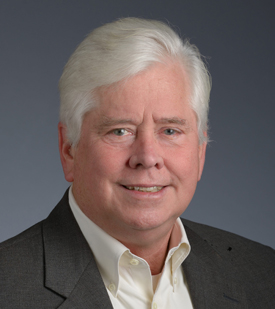Hepatitis C: Then and Now
Jay Hoofnagle, a Pioneer in Viral Hepatitis
Once upon a time, no one knew much about hepatitis C—except to call it non-A, non-B hepatitis. Hepatitis A, which is caused by the hepatitis A virus and spread through contact with an infected person’s stool, was discovered in 1973 by Albert Kapikian, Robert Purcell, and Steven Feinstone in the National Institute of Allergy and Infectious Diseases. Hepatitis B, which is caused by the hepatitis B virus and is spread via an infected person’s blood, semen, or other body fluids, was discovered in 1966 by then–NIH researcher Baruch Blumberg, who later went on to win the Nobel Prize in Physiology or Medicine in 1976.
But the non-A, non-B variety had researchers stumped until 1989, when the hepatitis C virus (HCV) was finally identified (Harvey Alter, in the NIH Clinical Center’s Department of Transfusion Medicine, did work on non-A, non-B hepatitis that led to the discovery of HCV).

“Although hepatitis C was well characterized by the 1980s, there were continuing doubts about its underlying causes,” said viral hepatitis pioneer Jay Hoofnagle, the director of the Liver Disease Research Branch in the National Institute of Diabetes and Digestive and Kidney Diseases. “Despite the lack of serologic and therapeutics markers, therapy was attempted as a treatment option then.”
On Nov 12, 2014, Hoofnagle outlined the past and future therapies for hepatitis C at the annual Astute Clinician Lecture, part of the Wednesday Afternoon Lecture Series.
Hepatitis C is a contagious inflammatory liver disease—spread through contact with infected blood or through sex with an infected person—that leads to cirrhosis of the liver and sometimes liver cancer. An estimated 3.2 million people in the United State have a chronic HCV infection. Many of those infected may not have any symptoms for years.
Hoofnagle has been at the forefront of advancing hepatitis B and C therapeutics since coming to NIH in the 1970s. In the 1980s, he conducted the first clinical trial using interferon for chronic hepatitis B. He also used interferon to successfully treat a small group of people with non-A, non-B hepatitis. When those people were re-evaluated 10 years later, some had a sustained virologic response (SVR) and were still healthy. Achieving an SVR is an important endpoint in the treatment of hepatitis C.
Once HCV was discovered, it could be accurately diagnosed and its structure elucidated. Scientists began to understand the breadth of genetic heterogeneity of the virus and also the high variability in its geographic distribution. At the same time, different antiviral therapies were being developed, and a combined treatment with alpha-interferon and ribavirin (an antiviral drug) showed promising results.
Further advances were made to improve the efficacy of the drugs, but the variability of the HCV genotype interfered. For example, the response rates among African-Americans trailed behind those of Caucasians. Although higher doses of interferon were effective initially, chances of relapse increased once the treatment was stopped. “Hence, there was obviously the need for another drug,” said Hoofnagle.
An HCV protease inhibitor such as boceprevir, telaprevir, or simeprevir, when given in combination with pegylated interferon and ribavirin, augmented the response rate. But even this combination therapy had limited success.
In recent months, a new treatment regimen has gained a lot of attention. An all-oral combination of ledipasvir and sofosbuvir with or without ribavirin given for 12 or 24 weeks has been highly effective in previously untreated patients who are infected with HCV genotype 1. In fact, ledipasvir-sofosbuvir is the first combination pill that has been approved by the FDA for treatment of chronic hepatitis C. But the new drug comes with a huge price tag of $1,125 a pill, or $94,500 for a 12-week course of treatment, Hoofnagle explained. “This is an enormous burden to an already overburdened medical-care system.”
Another drug, with an even higher response rate in previously treated patients, is already in the pipeline.
There are vaccines against the hepatitis A and B viruses, but so far none for HCV.
Yet, thanks to scientists like Hoofnagle, liver disease research has come a long way; and in spite of several roadblocks, significant discoveries have been made over the years. For Hoofnagle, “the Clinical Center at the NIH has been an ideal place for research” because it has given him the independence to pursue his goals, which “would not have been possible elsewhere.”
The Astute Clinician Lecture was established through a gift from Haruko and Robert W. Miller, M.D. It honors a U.S. scientist who has observed an unusual clinical occurrence and by investigating it, has opened an important new avenue of research. To see a videocast of Hoofnagle’s talk, “Past and Future Therapy of Hepatitis C,” go to http://videocast.nih.gov/launch.asp?18731.
This page was last updated on Tuesday, April 26, 2022
